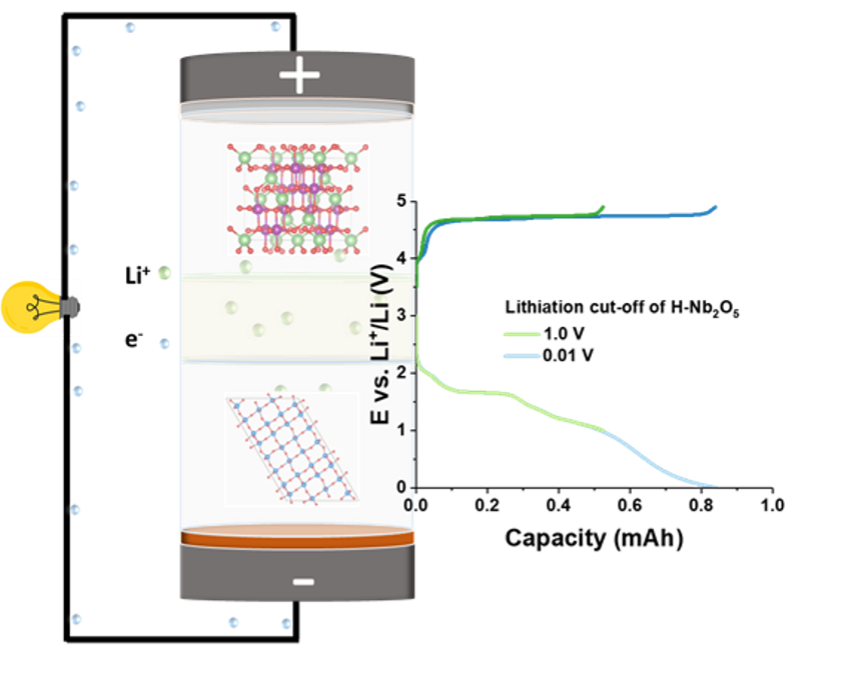Lowering the lithiation cut-off potential for Nb2O5: effects on performance and structure
|Lithium-ion batteries are the electrochemical energy storage technology of choice for electronic devices and electric vehicles, thus playing an imperative role in achieving the goal of carbon neutrality. However, fast charging of these devices remains a great challenge, and one way to improve this process is to use insertion-type active materials, such as monoclinic niobium(V) oxide (H-Nb2O5), for the negative electrode.

Using this material, Dr. Xilai Xue, Prof. Dominic Bresser and colleagues of the Helmholtz Institute Ulm at the Karlsruhe Institute of Technology lowered the lithiation cut-off potential to 0.8 and 0.01 V and performed a comprehensive investigation of the resulting reaction mechanism and its effect on performance and crystal structure using operando/ex situ X-ray diffraction, operando/ex situ X-ray absorption spectroscopy (available at the LISA beamline of CERIC associated facility at ESRF), ex situ high-resolution transmission electron microscopy, and operando isothermal microcalorimetry. The scientists have then shown that the increase in capacity does not come along with a deterioration of the cycling stability—at least initially.
In fact, they revealed that the extension of the voltage ranges does not affect the crystal structure during the first couple of cycles, but that it does so upon long-term cycling. These findings could then help to develop more stable and long-lasting lithium-ion batteries.
ORIGINAL ARTICLE:



